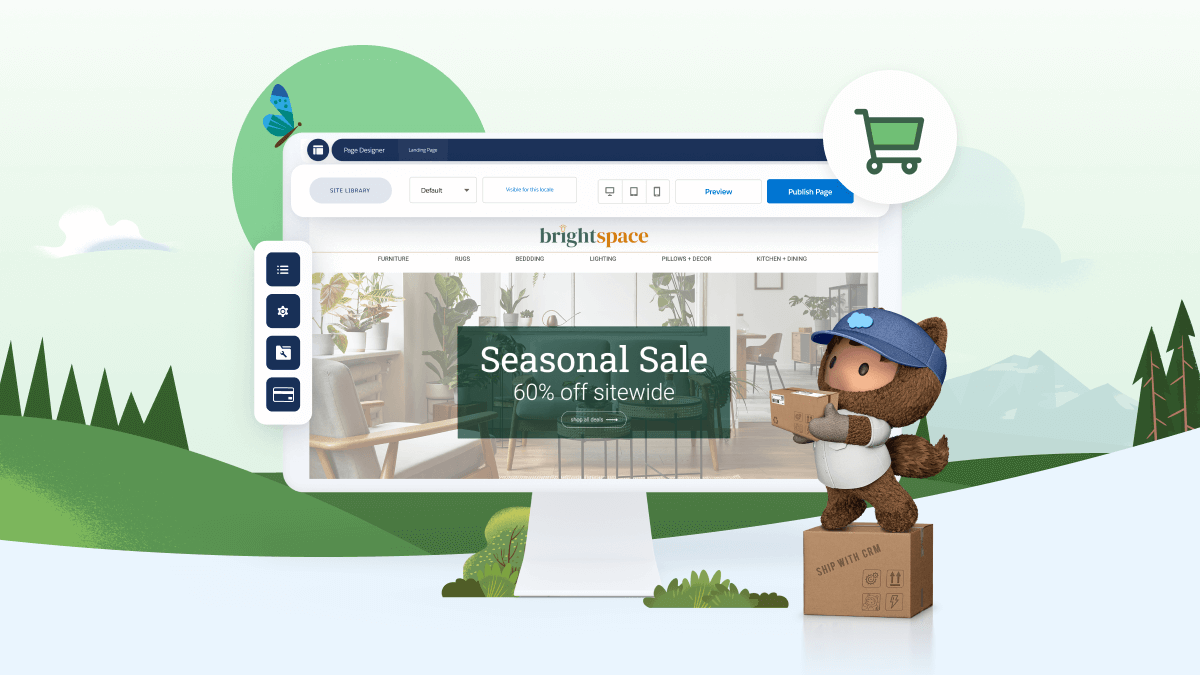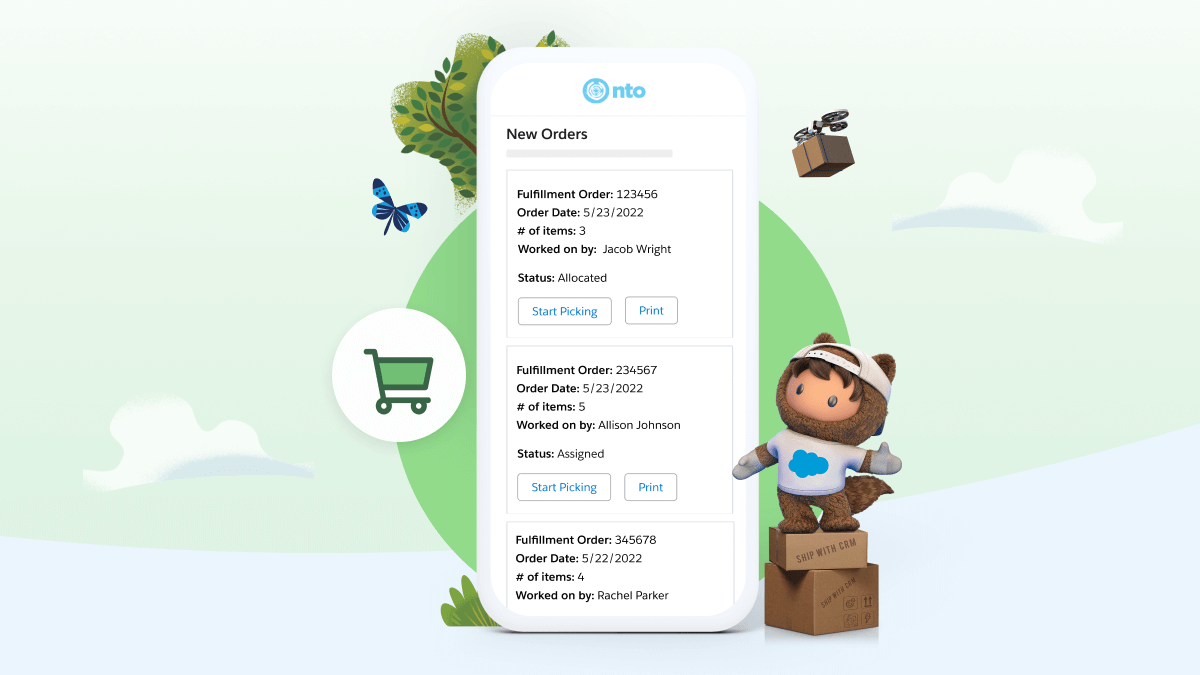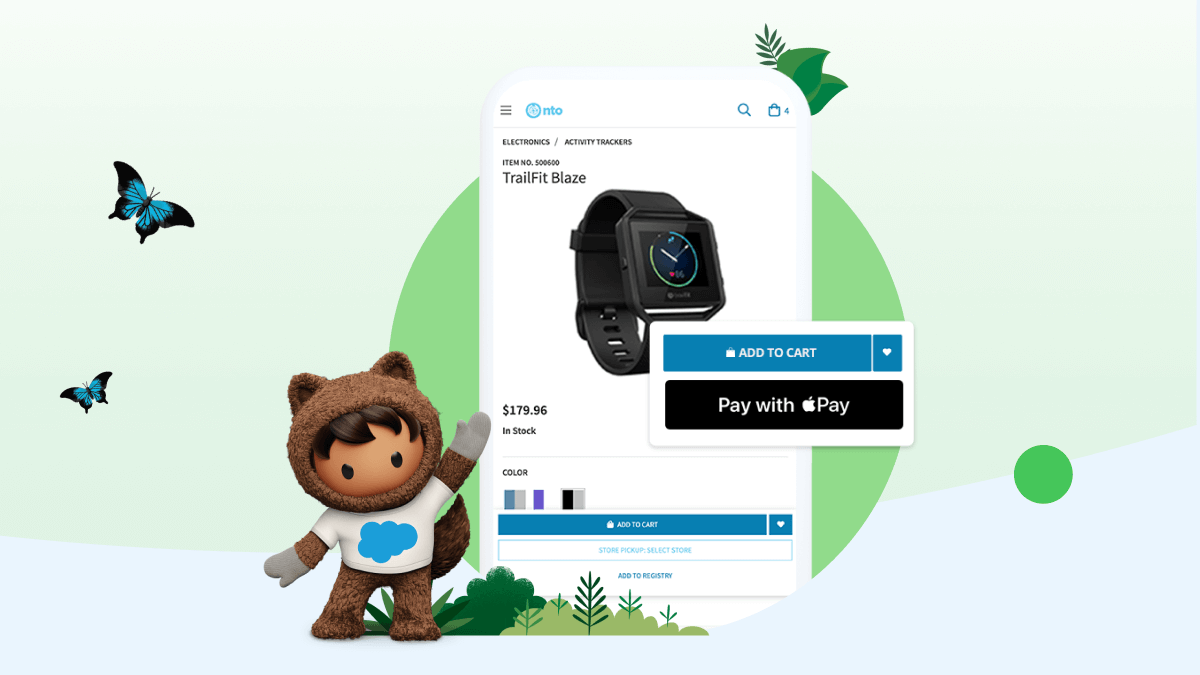How to Drive Efficiencies with an All-in-One Approach to Ecommerce
Editorial Lead, Commerce Cloud
Even better? An all-in-one approach means you’ll save time and money on implementation and get to selling faster, all while providing an improved experience for your customers. Here’s how:
Gain a crystal-clear view of the entire customer journey

To create a seamless experience and win customer loyalty, businesses need maximum visibility into each phase of the journey — from discovery to delivery. All-in-one commerce helps you establish a single source of truth across your business and makes it easier to get insights that drive efficiencies.
Relying on separate solutions to support order management activities (like order capture, order servicing, and flexible fulfillment) and payment processing can lead to a murky view of your customers. Without connected systems that share the same source of data, workflows get siloed and the user experience can start to feel disjointed. This is why 60% of customers say it generally feels like they’re communicating with separate departments, not one company.
Consider how valuable a detailed, accurate view of inventory and order status is for your service agents and customers alike. When order management and ecommerce are connected, inventory levels are transparent, which helps eliminate frustrating experiences like out-of-stocks, delays in delivery without proper communication, and more.
When it comes to payments, visibility across all methods and channels is critical. Think of all the intricate processes that must happen to result in an accepted payment: fraud prevention, authentication, validation, payment collection, and more. An all-in-one approach gives you the proper visibility to quickly identify opportunities and areas of improvement. For example, you’ll be able to spot delays in payment processing in real time. You’ll also be able to identify trends and patterns like overzealous fraud detection that declines real payments from genuine customers.
Ensure scalability for future growth

When you want to stay ahead of the market
Flexibility is key to staying responsive to rapidly evolving customer needs and market demands. The most efficient way to achieve this? An ecommerce platform that lets teams move fast with built-in templates, gain flexibility through composability, and better control their experience with headless APIs. And when you’re ready to expand your business to new industries or geographies, integrated compliance for GDPR, PCI, and HIPAA will ensure a seamless transition.
When your commerce platform shares the same source of data as your payments system and order management, you’ll be operating at your most efficient. Planning ahead with an all-in-one commerce approach will ensure you won’t outgrow any one piece of your integrated ecommerce technology.
When you want to add new payment methods
From buy now, pay later options to localized payment methods to digital wallets, new ways to pay arise regularly and they’re adopted faster than ever. However, ecommerce leaders can run into roadblocks when it’s time to add new payment methods. Nearly half of consumer sellers and B2Bs are concerned about the time and expense of implementation.
Taking an all-in-one approach means that a singular trusted partner manages your ecommerce and payment solutions. This also removes the risks and development burden from your IT and development teams as data and privacy regulations become more stringent over time.
When you expand into global markets
When you need to keep up with order management trends

44% of consumers cite convenience as a reason they will switch brands.
Save time and reduce IT costs

One thing that can delay your launch and increase costs? Vetting different vendors and implementing disparate products. Every separate product requires a contract (which takes time to negotiate). You’ll also need to manage multiple vendor relationships, each with different sales teams and pricing models. That’s a lot to juggle — and that’s all before the implementation process begins.
An all-in-one approach eliminates these issues. Instead of spending time drafting separate requests for proposals for your commerce platform, order management, and payments systems, you can find a partner that combines all three. This approach significantly decreases the upfront time spent searching for vendors and ensuring they meet your unique requirements.
Disparate systems for commerce, order management, and payments can also lead to higher IT costs and drained development resources. For every separate product you implement, your team will need to maintain it. This means you will need to dedicate resources to keep multiple payment gateways updated, optimize fulfillment and shipping integrations, and more.
Instead, an all-in-one commerce solution means there’s only one relationship to manage and you won’t need to spend valuable resources on maintenance. In fact, some businesses have reduced IT development time by 75% just by connecting order management to payments and ecommerce. Even better? The right partner will offer a regular cadence of innovations in the form of new features and automatic updates. With up-to-date ecommerce, order management, and payments solutions, your team can focus on building the customizations that mean the most to your business and your customers.
At the end of the day, customer satisfaction is your north star. And if your development and IT teams are constantly tasked with maintaining critical ecommerce services, that means there’s no time to focus on building experiences that will wow your customers.

In fact, some businesses have reduced IT development time by 75% just by connecting order management to payments and ecommerce.
Considerations for an all-in-one solution

Platform
Whether you decide to implement headless commerce, choose an out-of-the-box template, or build your own storefront on top of a platform, there are a few things that should always be a priority. When you choose a platform solution, ensure that it enables speed and agility. Out-of-the-box tools (like a drag-and-drop page designer, embedded artificial intelligence [AI], and integrations with social media) will help you speed up time to value and deliver stellar experiences across every channel. Features like content management and storefront search will also ensure a user-friendly site.
However, none of this will matter if your platform solution can’t deliver uptime. Your ecommerce business depends on a reliable, accessible site. It’s critical to choose a platform partner with a history of high availability — preferably 99.99% uptime. For every minute of website downtime, your business will miss out on potential revenue.
Payments
To meet customer demands and deliver a stellar user experience, your payments solution should remove friction, offer localized options, and be optimized for mobile. Fraud prevention is also a major factor. In fact, 54% of digital leaders say that fraud is a concern when implementing a new payment method. Look for a payments solution that uses machine learning, tailored rules, and dynamic authentication to detect and prevent fraud. Bonus points if your solution includes built-in regulatory compliance measures. If your team doesn’t need to devote their time and resources to these activities, this can significantly lower costs for your business.
Payment preferences change rapidly and your ability to accept preferred methods will impact your success. Choose a solution that reduces the complexity, time, and cost of adding new ways to pay.
Order management
Customers increasingly expect all interactions with an organization to smoothly tie together — and this includes order management. In fact, 83% of customers say they’re more loyal to companies that provide consistency across departments. It’s critical that your order management solution connects with other parts of your business — like commerce, service, sales, and marketing. The right order management solution will consolidate customer and order data to give your teams a single view and help you deliver seamless customer experiences.
To drive efficiency, order management should also come with out-of-the-box tools to help you automate and manage simple tasks — like checking order status, returns, cancellations, and more. This significantly lowers costs by reducing service center calls. For example, businesses using Salesforce Order Management see an average reduction of 25% in customer service case-handling time.

83% of customers say they’re more loyal to companies that provide consistency across departments
Launch fast with all-in-one commerce


CUSTOMER STORY
See how Christy Sports improved its customer experience in just three months

DEMO
See how to launch, adapt, and grow your business with Commerce Cloud

DEMO
Learn how to differentiate your business with order management
More resources

Uncover commerce trends and learn how industry leaders are setting a new pace.

Launch new ways to pay — fast —with Salesforce Payments



